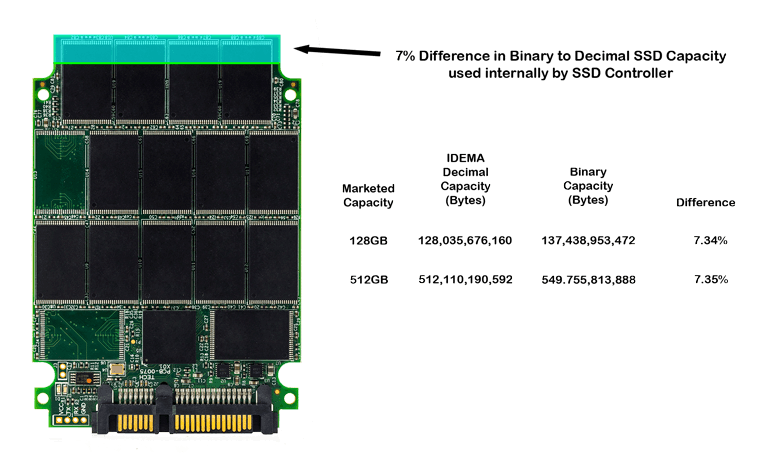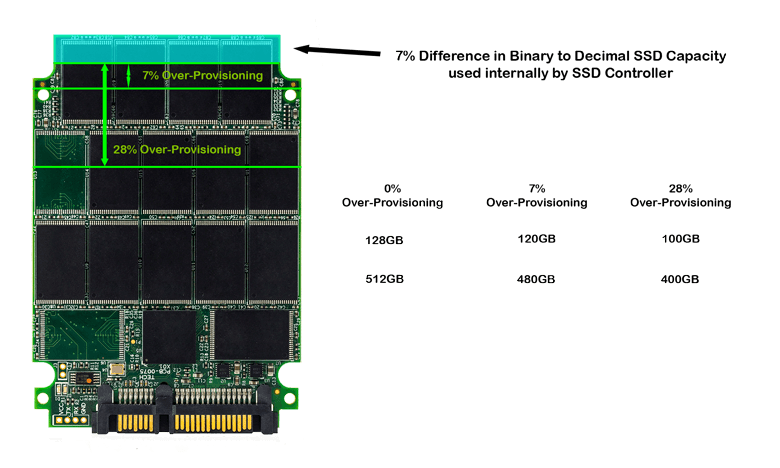Solid State Drive Primer # 13 - Controller Functions - Over-Provisioning
The amount of Over-Provisioned area is generally set at the factory during the final low level formatting of the SSD. The typical percentages of Over-Provisioning are 0%, 7% and 28%.
An example of these percentages seen in the market would be a 128GB SSD which can be marketed as a 128GB with 0% Over-Provisioning, 120GB at 7% and 100GB at 28%. It is the same SSD with different amounts of “user-space” available.
Over-Provisioning which is typically not counted:

One item that is not readily apparent to most users is the fact that NAND components are sold in binary capacity points versus SSD which are sold in decimal capacities. As shown above, there is a little over 7% of the SSD’s NAND capacity which is not available to the user.
The International Disk Drive Equipment and Materials Association (IDEMA) has published a standard (LBA 1-03) for drive capacities that most HDD and SSD manufacturers follow. The 128GB and 512GB capacities are shown in the table above.
This binary to decimal difference is typically not counted as Over-Provisioning. The space is used internally by the controller for firmware storage, spare sectors, bad block mapping, wear leveling and other tasks similar to Over-Provisioning.
Over-Provisioning at 0%, 7% and 28%

For this discussion, the 7% binary to decimal capacity is already removed. The table above shows the decimal 128GB and 512GB at the three most common Over-Provisioning percentages.
Over-Provisioning typically come in 0%, 7% or 28% chunks. Most of the lower capacity products have 0% Over-Provisioning in addition to many of the Industrial Grade devices built with the extremely high endurance SLC NAND.
For many client SSD built with MLC or TLC NAND on the market today, 7% Over-Provisioning is used and Enterprise SSD typically use 28%.
What are the Advantages and Disadvantages of Over-Provisioning?
The advantages of Over-Provisioning are to reduce Write Amplification while increasing endurance and performance. The key disadvantage of Over-Provisioning is loss of user capacity.
A user is trading higher reliability and more endurance and in some cases better performance for less usable space.
If you would like to discuss this further please contact us.






